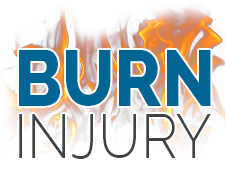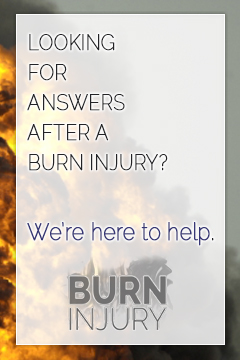Friction Burns
Friction burns can occur as part of larger accidents, in any home, or in the workplace. They can be equally as or even more serious in terms of severity than other burns. Often times, friction burns can result in third degree burns and require months of intensive surgery and healing. Friction burns can occur in any situation in which there is movement, making them the most ubiquitous type of burns.
Types of Friction Burns
There are a variety of causes of friction burns. There are two distinct groups into which friction burns can be divided. One occurs as a result of a person moving quickly and then meeting with a static object such as the ground. The resulting friction can be serious enough to cause third degree burns depending on the speed. Both rug burns and motor vehicle accidents fit into this category.
The other category of friction burns occurs as a result of person coming into contact with something moving very fast such as a belt sander or a treadmill. Often times, these types of friction burns are much more dangerous because, if a person is alone or unable to stop the machine, it can continue to run and produce friction well past the point in which there is nothing left to burn. Even a household item such as a vacuum can be a dangerous source of pain and disfigurement.
Causes of Friction Burns
There are many common causes of friction burns. Most are related to machines with quickly moving parts. Others are related to surfaces such as carpet and asphalt. In cases such as asphalt, the temperature of the surface is a factor in the severity of the burn. Therefore, accidents in which a passenger skids across a road are usually worse in the afternoon.
Common causes of friction burns include:
- Carpet burns
- Rope burns
- Treadmills
- Vacuum cleaners
- Sanding or automotive belts
- Road accidents (often referred to as “road rash”)
Safety and Prevention
The best form of prevention in cases of friction burns is remaining alert and wearing proper clothing. Motorcyclists are especially at risk for road rash due to high speeds and to the lack of an enclosure. All cyclists should take care to wear thick, padded clothing and a helmet.
Children are also especially at risk for friction burns in the house, particularly from treadmills and vacuum cleaners. Never leave a child alone with such equipment as they can easily fit their hands into otherwise unexposed areas containing moving parts. Many children have unfortunately suffered frictions burns as a result of treadmills and have had to undergo lengthy and painful surgeries.
Sources:
Agrawal, A., S.C. Raibagkar, and H.J. Vora. “Friction Burns: Epidemiology and Prevention.” National Institute of Health (NIH), 31 Mar. 2008. Web. 13 Dec. 2014. <http://www.ncbi.nlm.nih.gov/pmc/articles/PMC3188131/>.
Menon, Seema, Diane Ward, John G. Harvey, Erik La Hei, and Andrew J. A. Holland. “Friction Burns in Children.” Journal of Burn Care & Research (2004): 736-40. Print.
Rubin, P., I. Starley, and R.P. Jones. “The Revolutionary Dual Cyclone Vacuum Cleaner — a New Cause of Digital Friction Burns in Children.” Burns: 78-79. Print.














